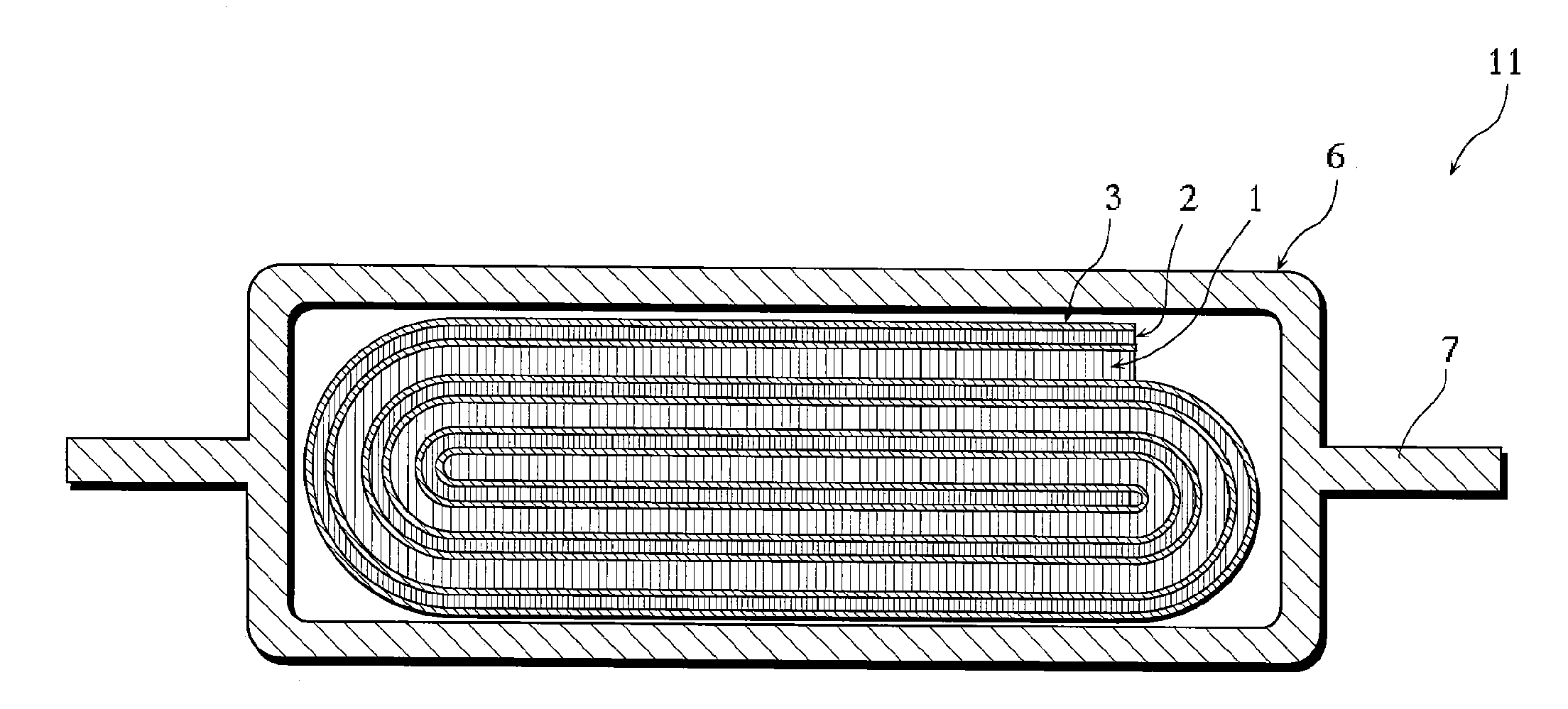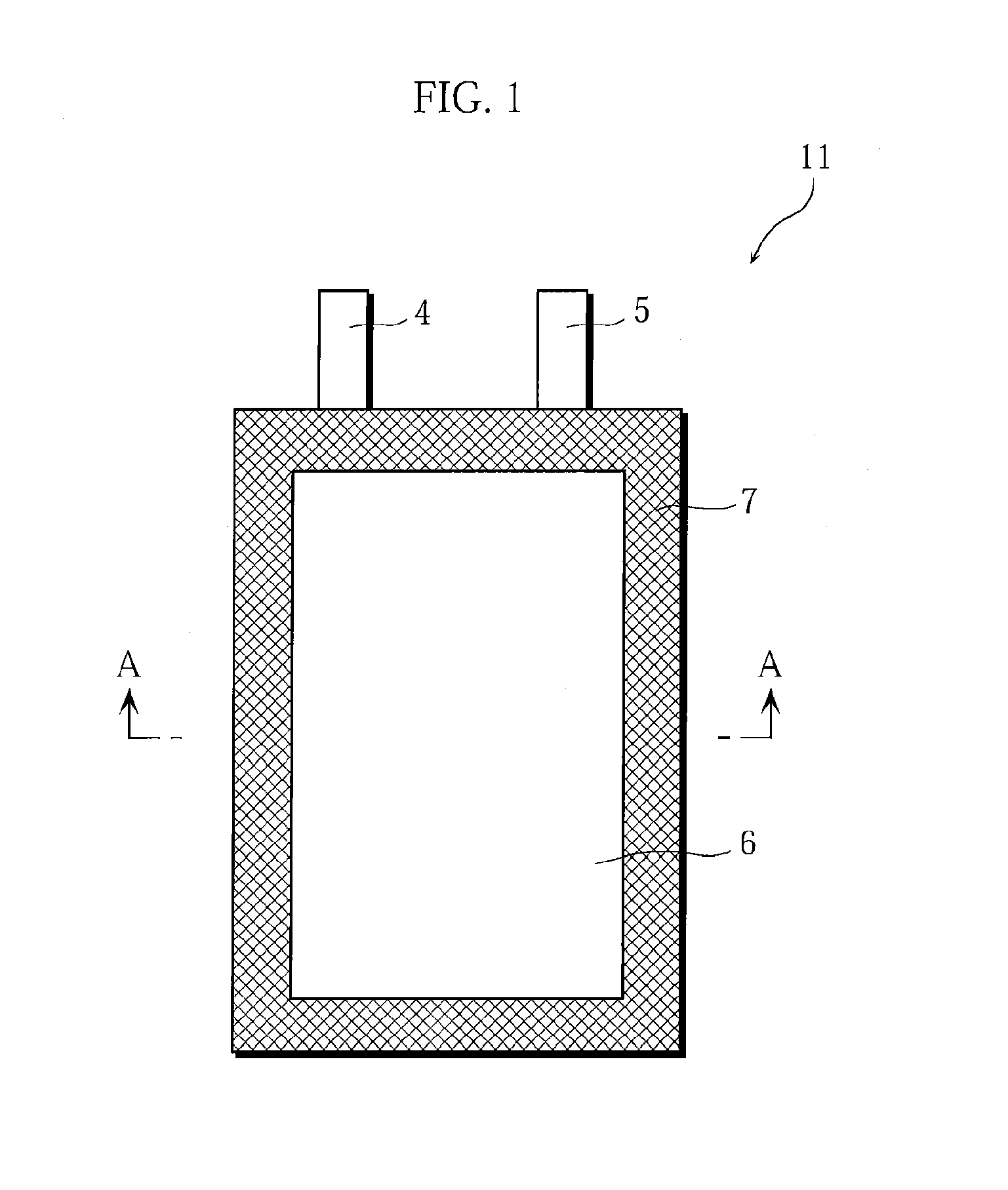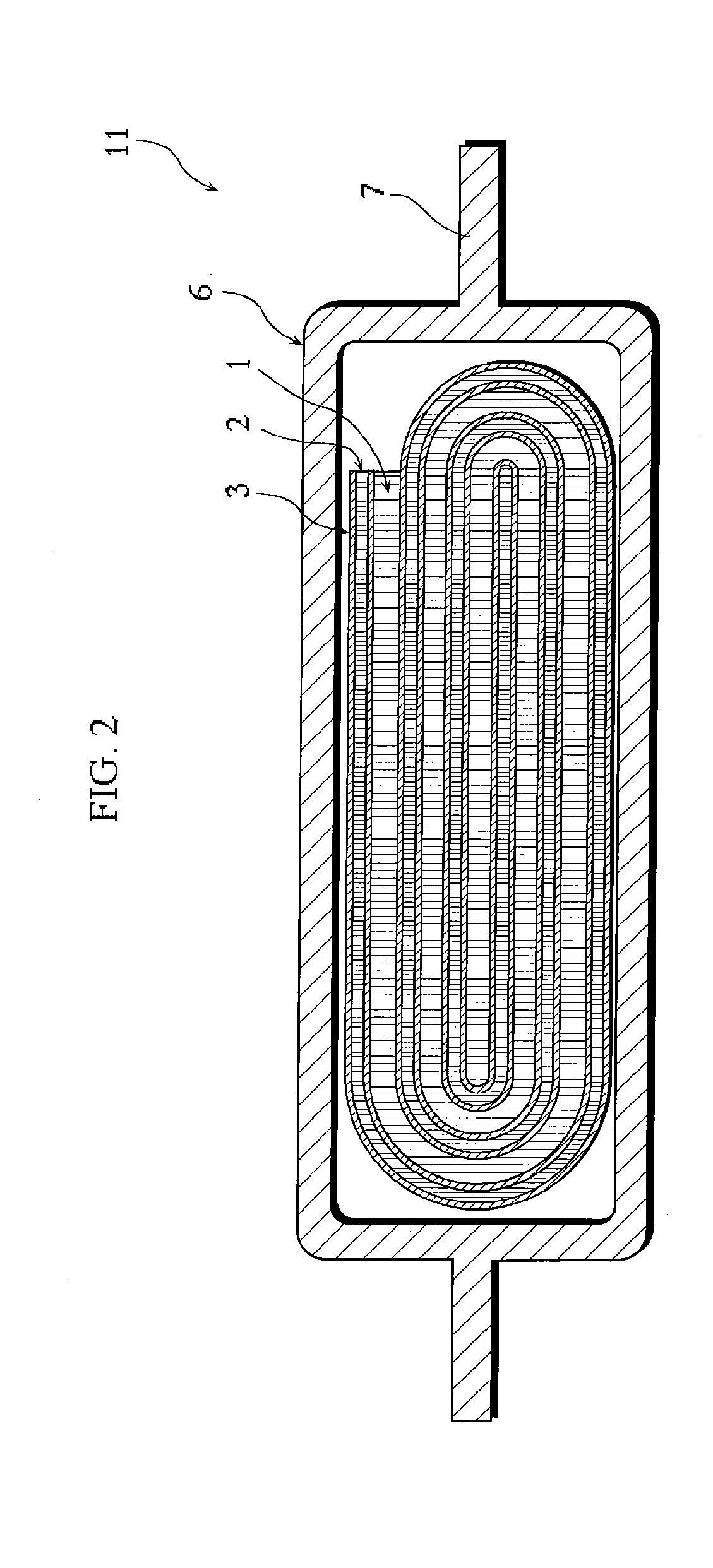Lithium secondary battery
a secondary battery and lithium ion technology, applied in cell components, electrochemical generators, cell components, etc., can solve the problems of material undergoing a great volumetric change, material pulverizing or peeling off from the negative electrode current collector, and mobile information terminal devices tend to power consumption, so as to inhibit the degradation of charge-discharge performance, and the performance of absorption and release of lithium ions at the surface
- Summary
- Abstract
- Description
- Claims
- Application Information
AI Technical Summary
Benefits of technology
Problems solved by technology
Method used
Image
Examples
example 1
[0052]A battery fabricated in the same manner as described in the foregoing embodiment was used as the battery of Example 1.
[0053]The battery fabricated in this manner is hereinafter referred to as Battery A1 of the invention.
example 2
[0054]A battery was fabricated in the same manner as described in Example 1 above, except that the heat-treatment temperature for the powder obtained by vacuum filtrating the suspension and further washing it with water was set at 300° C. When the heat treatment is carried out at 300° C., all of or most of the erbium hydroxide changes into erbium oxyhydroxide, so the erbium oxyhydroxide is adhered to the surface of the lithium cobalt oxide particles in a dispersed form. However, a small portion of the erbium hydroxide may remain in the form of erbium hydroxide (without changing into erbium oxyhydroxide), so it is possible that erbium hydroxide may exist on the surface of the lithium cobalt oxide particle. It should be noted that the compound adhered to the surface of the lithium cobalt oxide particles in a dispersed form herein may be referred to as erbium oxyhydroxide, taking into consideration that all or most of the erbium hydroxide changes into erbium oxyhydroxide.
[0055]The batt...
example
Preparation of Positive Electrode
[0076]First, LiOH and a composite hydroxide containing nickel as the main component of the metal elements [Ni0.80Co0.17Al0.03(OH)2] were mixed in an Ishikawa-type Raikai mortar so that the mole ratio of Li to the whole of the transition metals became 1.05:1. Thereafter, the mixture was sintered at 720° C. for 20 hours in an oxygen atmosphere and thereafter pulverized, to thus obtain powder of a lithium-transition metal composite oxide represented as Li1.05Ni0.80Co0.17Al0.03O2 (average particle size 15 μm). Next, erbium oxyhydroxide was adhered to the surface of the lithium-transition metal composite oxide in the same manner as described in Example 2 in the First Group of Examples.
[0077]Next, using the powder of the positive electrode active material in which erbium oxyhydroxide was adhered to the surface, a positive electrode mixture slurry was prepared in the same manner as described in Example 2 in the First Group of Examples above. Thereafter, the...
PUM
 Login to View More
Login to View More Abstract
Description
Claims
Application Information
 Login to View More
Login to View More - R&D
- Intellectual Property
- Life Sciences
- Materials
- Tech Scout
- Unparalleled Data Quality
- Higher Quality Content
- 60% Fewer Hallucinations
Browse by: Latest US Patents, China's latest patents, Technical Efficacy Thesaurus, Application Domain, Technology Topic, Popular Technical Reports.
© 2025 PatSnap. All rights reserved.Legal|Privacy policy|Modern Slavery Act Transparency Statement|Sitemap|About US| Contact US: help@patsnap.com



